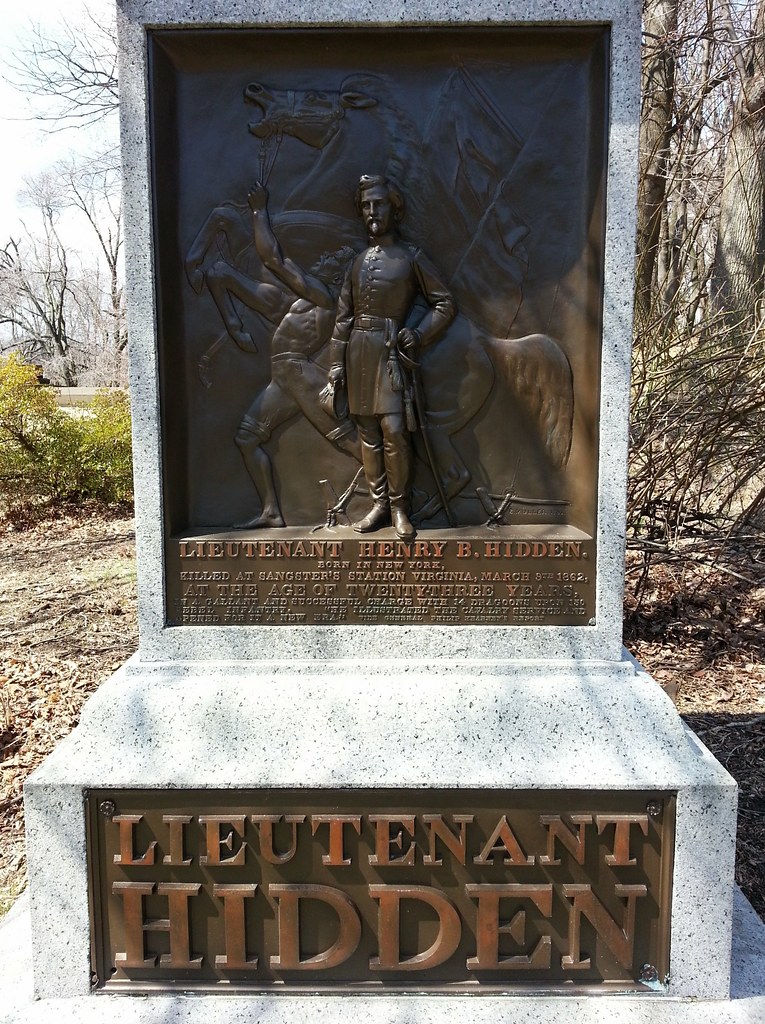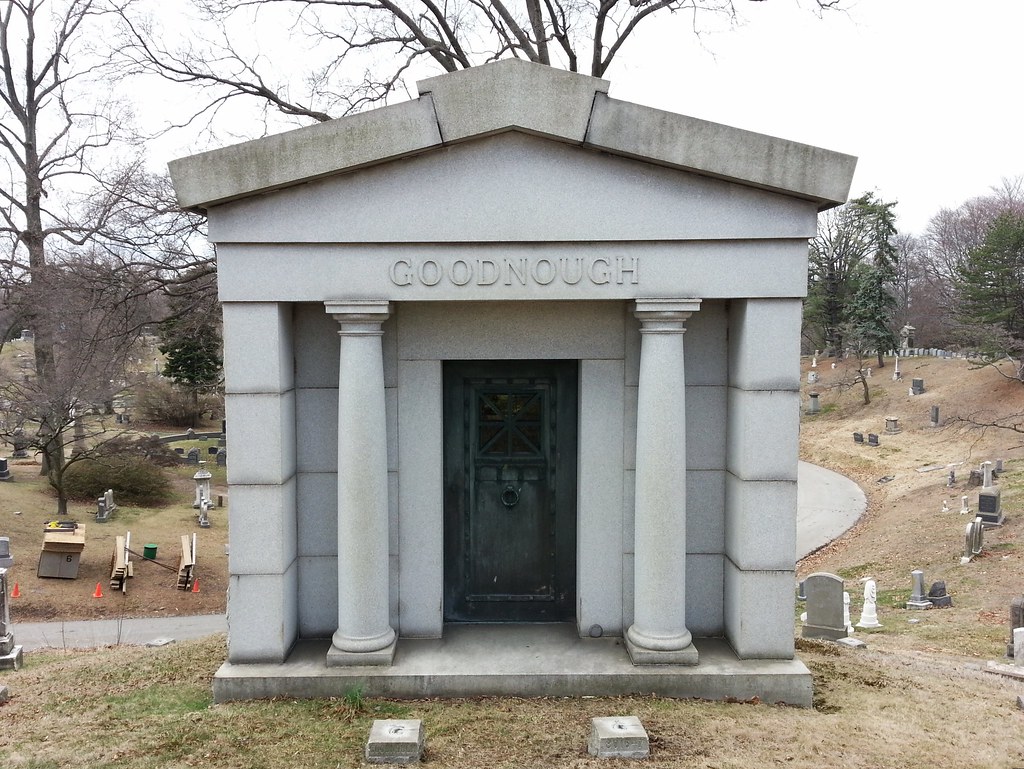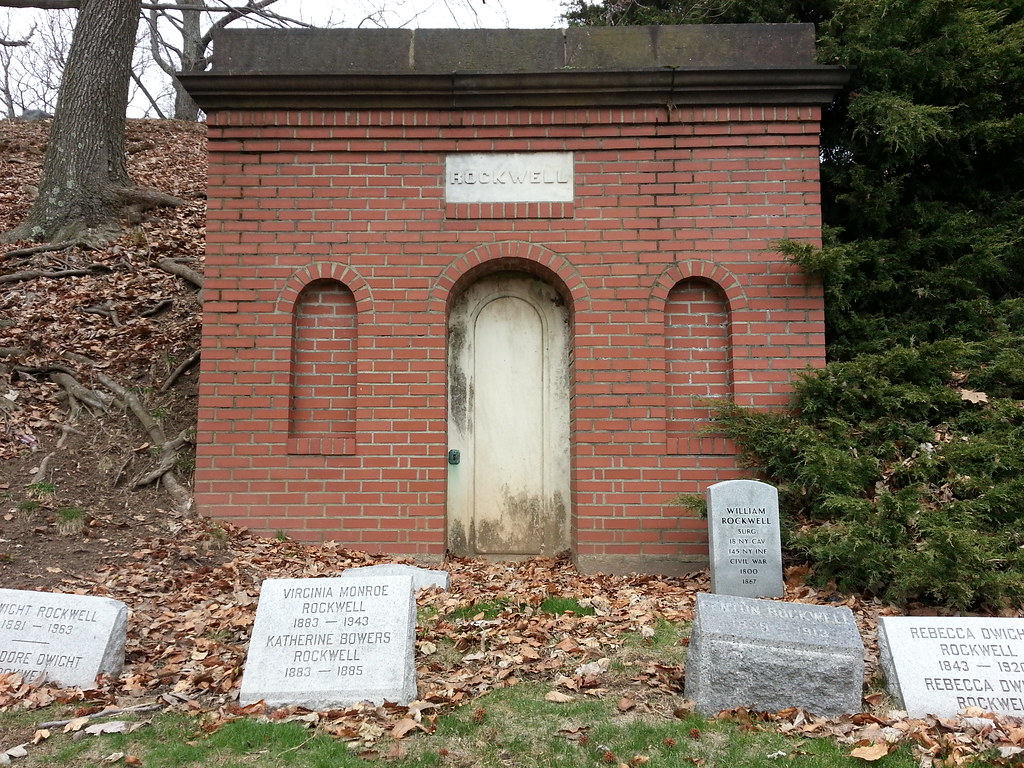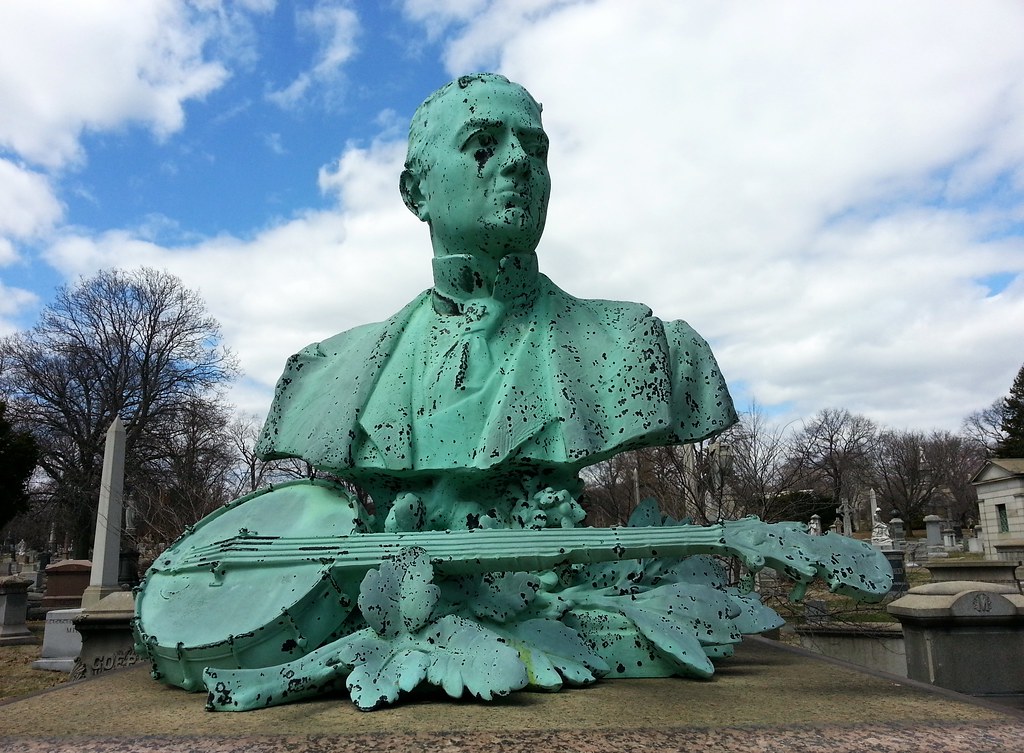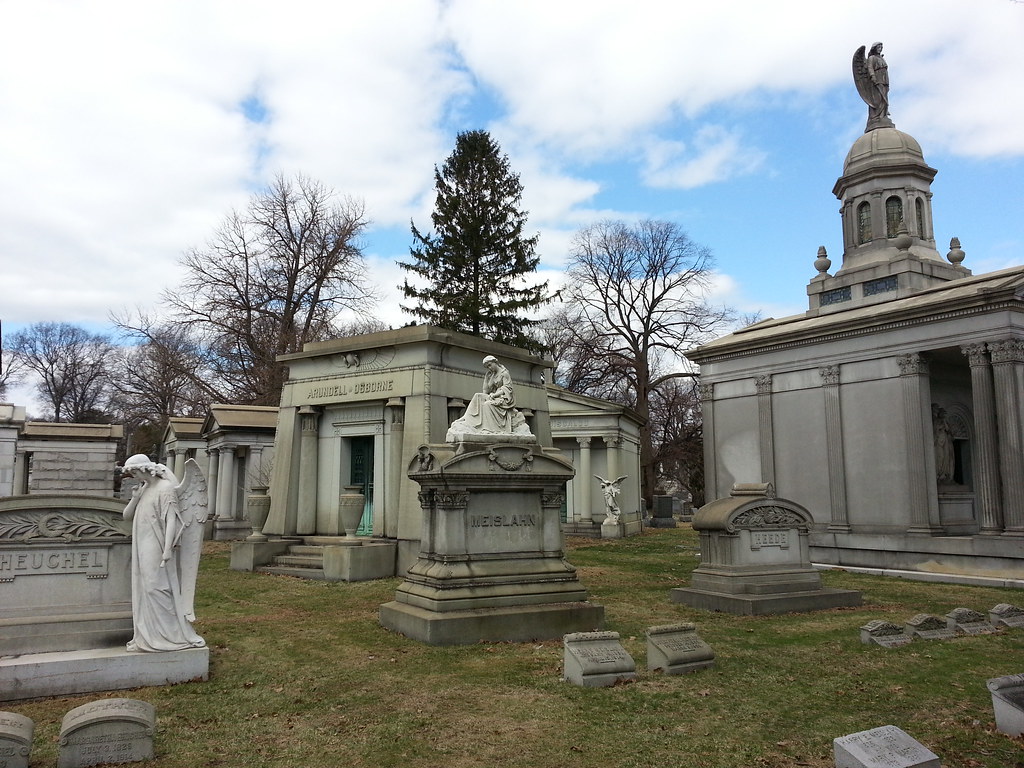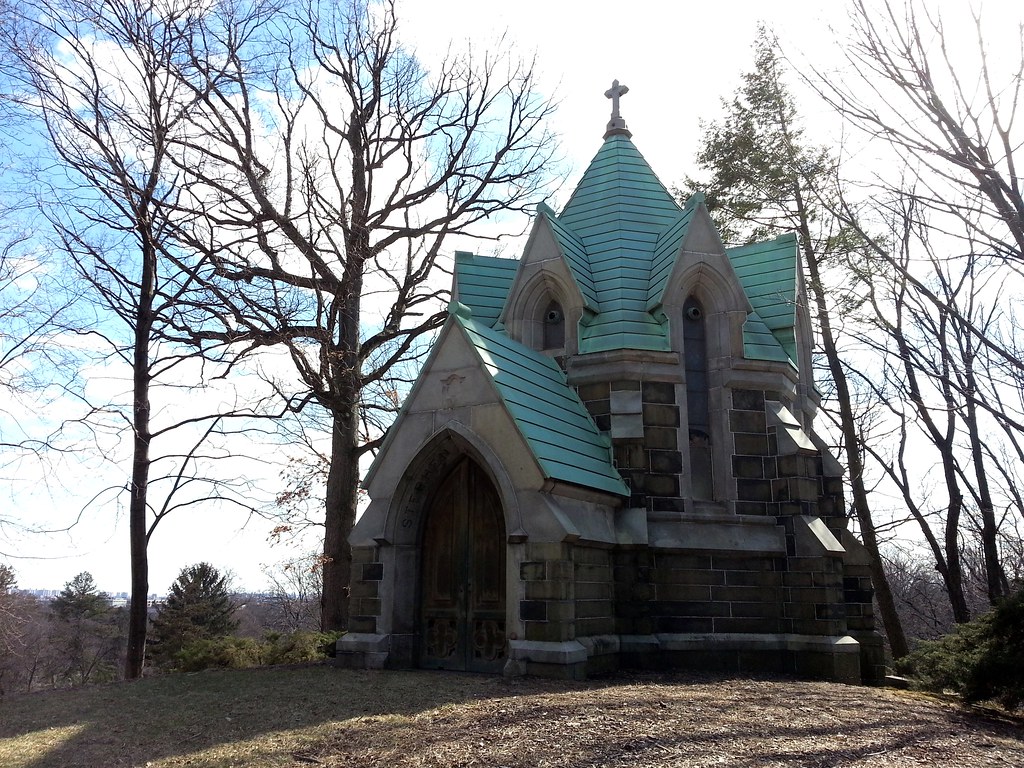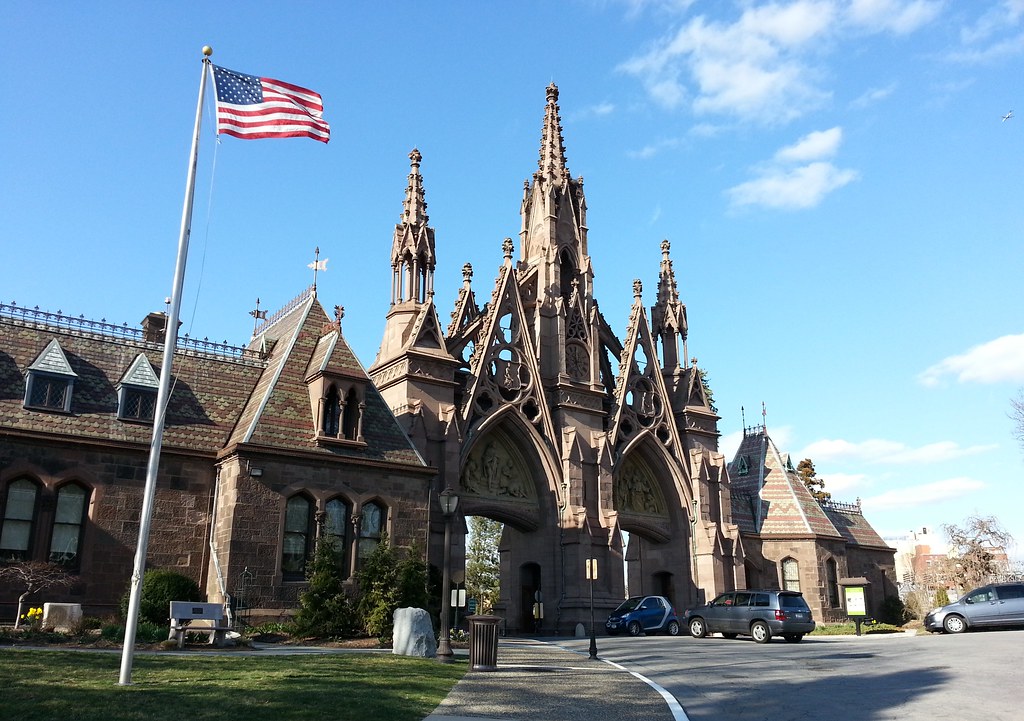

The old Belgian block pavement of 2nd Avenue has become quite a bit more exposed since last September.
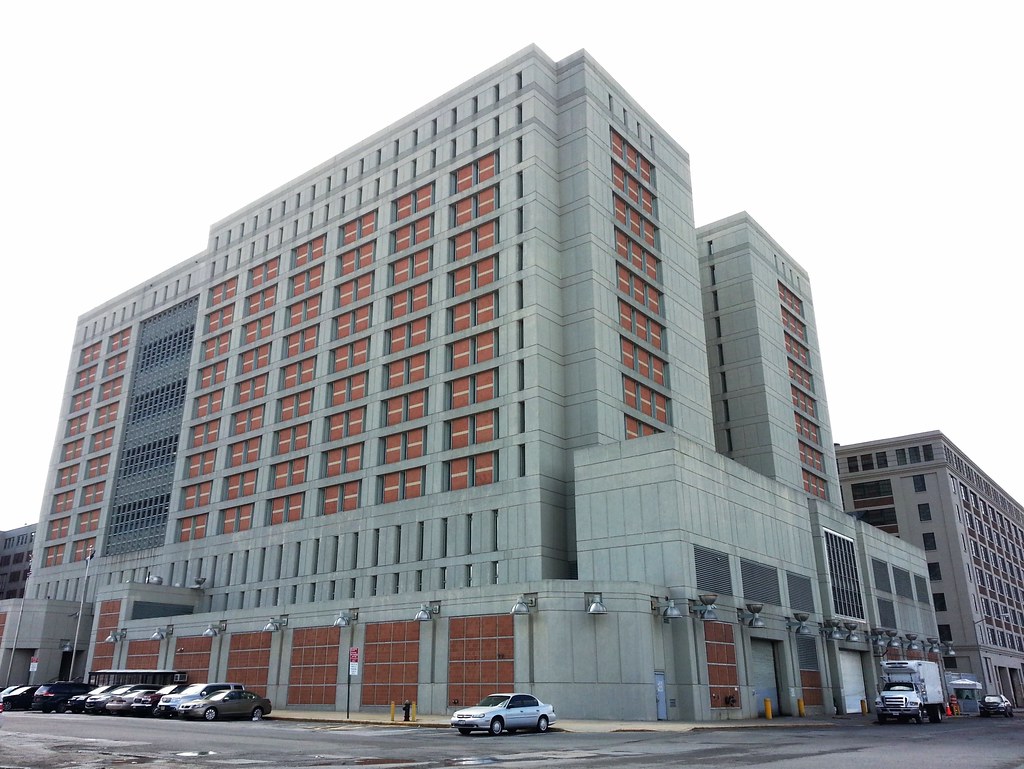
This federal detention facility blends in quite well with the warehouses lining 2nd Avenue here in Sunset Park. One current inmate is Sister Megan Rice, the octogenarian nun who in 2012, along with two 60ish-year-old men, "carried out what nuclear experts call the biggest security breach in the history of the nation’s atomic complex, making their way to the inner sanctum of the site where the United States keeps crucial nuclear bomb parts and fuel" in Oak Ridge, Tennessee, and vandalizing the place in protest of the US's continued maintenance of a nuclear arsenal.

This will probably be my last day at this beautiful 478-acre sculpture garden/necropolis. You can see the previous two days here and here.
Pictured above is the Tranquility Garden columbarium, with the sky obelisk (which we've been inside of) at right.
Today happened to be Qingming, a Chinese festival that involves tending family graves and honoring the deceased. Around the columbarium, there are little raised altars with flames where I saw Chinese people burning paper offerings — apparently a way of sending gifts to departed ancestors. A young woman who was there with her parents told me that sometimes the offerings are actually shaped like the objects they're supposed to represent. She specifically mentioned the example of people burning paper iPhones.

Lakefront mansions at Green-Wood's Sylvan Water, a modified glacial kettle pond

including the Rev. Lawrence Heyworth Mills, D.D., Professor of Zend Philology at the University of Oxford (close-up)
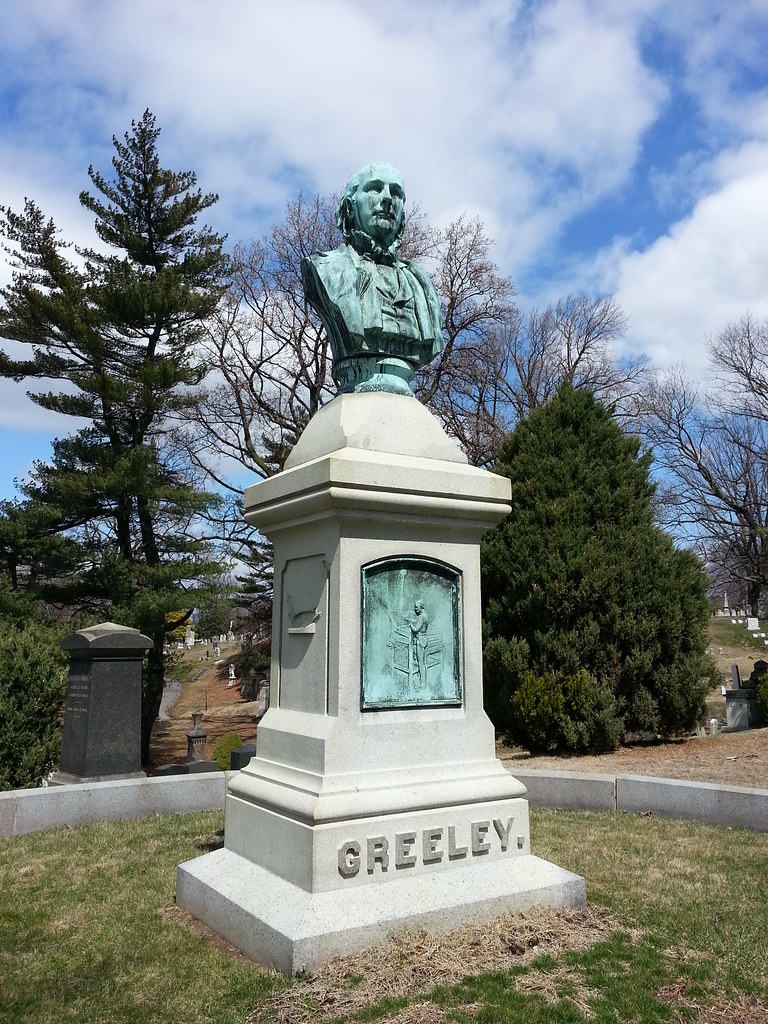
Founder and editor of the highly influential New York Tribune, Greeley was also the loser of the 1872 presidential election. His wife died less than a week before the election, and, after suffering a breakdown, he passed away just a month later, before the Electoral College votes had even been cast.

Bob Dylan's romantic account of this mobster's life conveniently glosses over the man's cold-blooded ruthlessness. (Lester Bangs called the song "one of the most mindlessly amoral pieces of repellent romanticist bullshit ever recorded".) But Dylan did get Gallo's death correct: he was indeed blown down in a clam bar in New York. And now his remains lie forgotten beneath a scraggly bush, his name half covered with dirt.

Eleanor Roosevelt's great-grandfather from the "missing" side of her family? Although I can't find any definite proof, it seems quite likely. Mr. Hall doesn't show up in Green-Wood's online records, but there's a woman buried here with the same name (Susan) as Eleanor's great-grandmother, and there's another fellow with the last name of Tonnele — Eleanor's great-grandmother's maiden name.

outside the lavish family mausoleum (photo) of 19th-century impresario William Niblo. Niblo was the proprietor of the famed Niblo's Garden, "a vibrant drink and entertainment antecedent to modern Broadway theater-going", where "the first of the great Broadway hits" — a five-and-a-half-hour extravaganza of "art and bodily allurement" called The Black Crook — premiered in 1866.
Niblo's wife died well before he did, and in his later years he would frequently spend summer afternoons at Green-Wood, whiling away the hours inside the family tomb, "novel in hand, until the shadowing of the grand path before the door showed him that evening was near." During one visit, however, a great burst of wind slammed the vault door shut and trapped him inside. It wasn't until the next morning that he was discovered, "sitting composed in the tomb, and by no means near so much agitated as was any one of those who were looking for him. He explained the accident, his shrieks for assistance, and then his relapse into a calm and philosophical consideration of the circumstances. He knew that no one could hear him call, but he felt that the active brains of his friends would seek him out, and that sooner or later he would be liberated."

Built with piano money, this is supposedly the largest mausoleum in Green-Wood Cemetery.
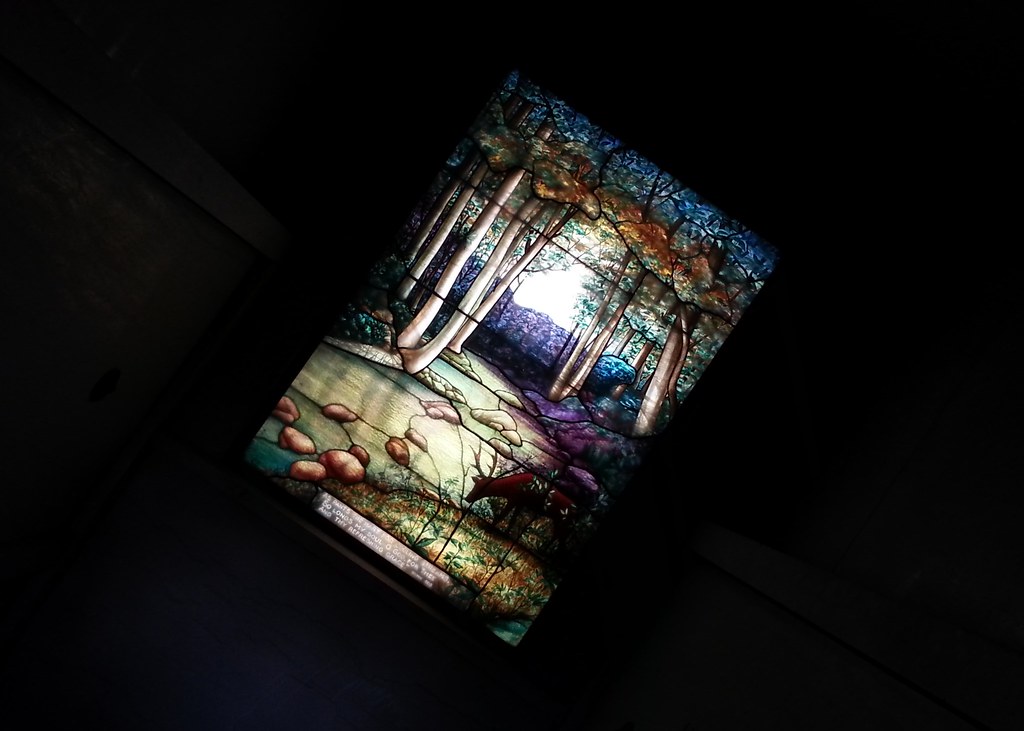
As pants the hart for cooling streams...
(Inside the Goodnough mausoleum.)
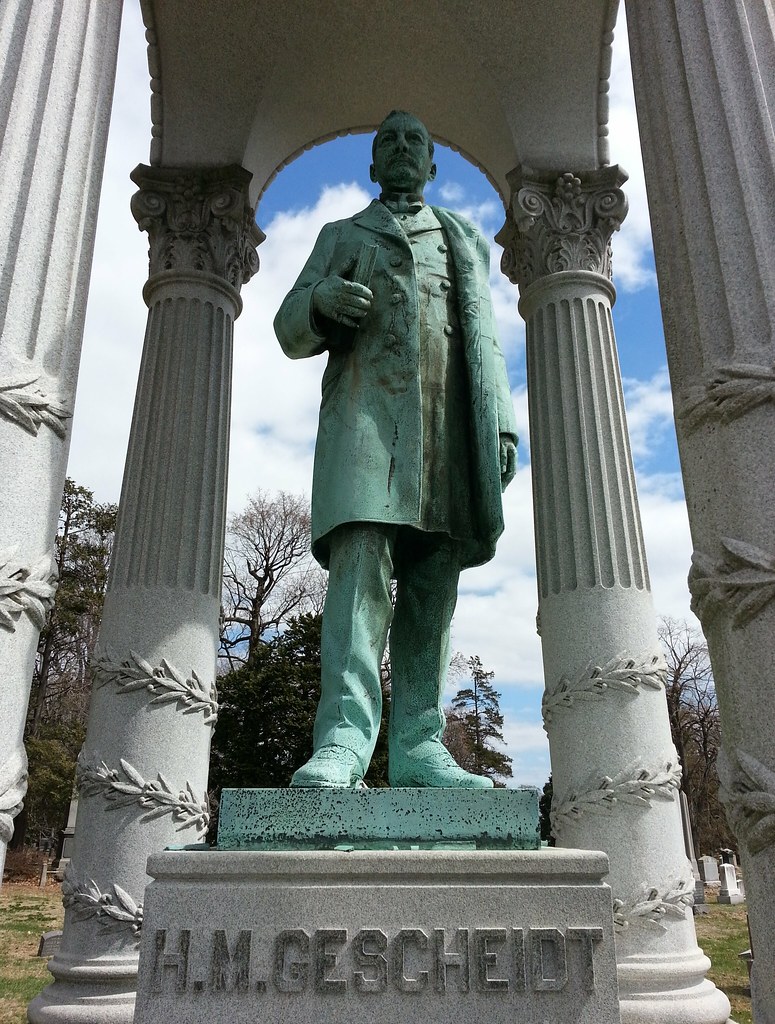
From an NY Times article published shortly after his death in 1914:
Mr. Gescheidt, who recently had a large law practice and an office at 309 Broadway, has for the last twenty years been making elaborate preparations for his death. To his intimates he has frequently confided his desire to be remembered for centuries. With this purpose in view Mr. Gescheidt has in his will provided for the establishment of a bread line, which shall not only be known as the "Gescheidt Bread Line," but he also requires that his name in raised letters be on each and every loaf of bread distributed to the needy who apply for aid.He bequeathed $150,000 to Trinity Church to establish this bread line, but the church turned down the gift "in accord with scientific philanthropic ideas of today", according to another article published a few months later:
Trinity has been saddled for more than a century with one such charity, known as "The Leake Dole." Through its provisions loaves of bread are distributed every Saturday morning to the poor of one of the lower West Side Trinity parishes. The Leake Dole does not fill a want of any marked character, but it must be maintained. It has been the experience of charity workers in Great Britain, where the dole flourishes for making curious gifts to the poor, that the establishment of such philanthropy in a parish often spells decadence and ruin for the parish. This is due to the fact that a worthless class of persons invade such parishes to take advantage of the dole, being content to exist on that. The scheme worked out by Gescheidt for the establishment of a bread line and for the stamping of his name on each loaf belongs to the order of bequest made many years ago in England for a dole of a bottle of port wine and a leg of veal to be given to every convalescent discharged from the hospital in a certain parish. When that dole was made port wine and veal were looked upon as luxuries, and the donor of the dole never considered what effect such heavy meat and drink would have on the poor recipient. He had a warm heart, as Mr. Gescheidt had, but neither of these charitably-minded men viewed his gift in its future economic aspect.
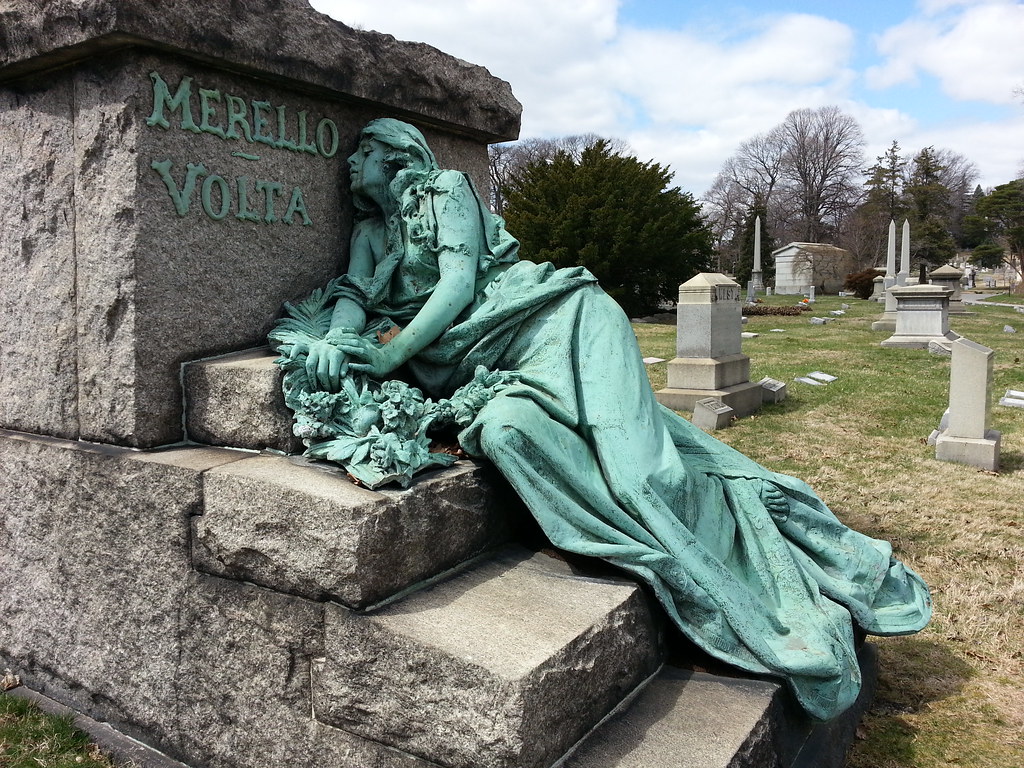
This sculpture commemorates Rose Guarino, who was shot to death in 1909 by a disgruntled family servant upset over his treatment by a fellow servant. He shot the other servant twice with a revolver; when Mrs. Guarino tried to intervene, he blasted her with a shotgun.
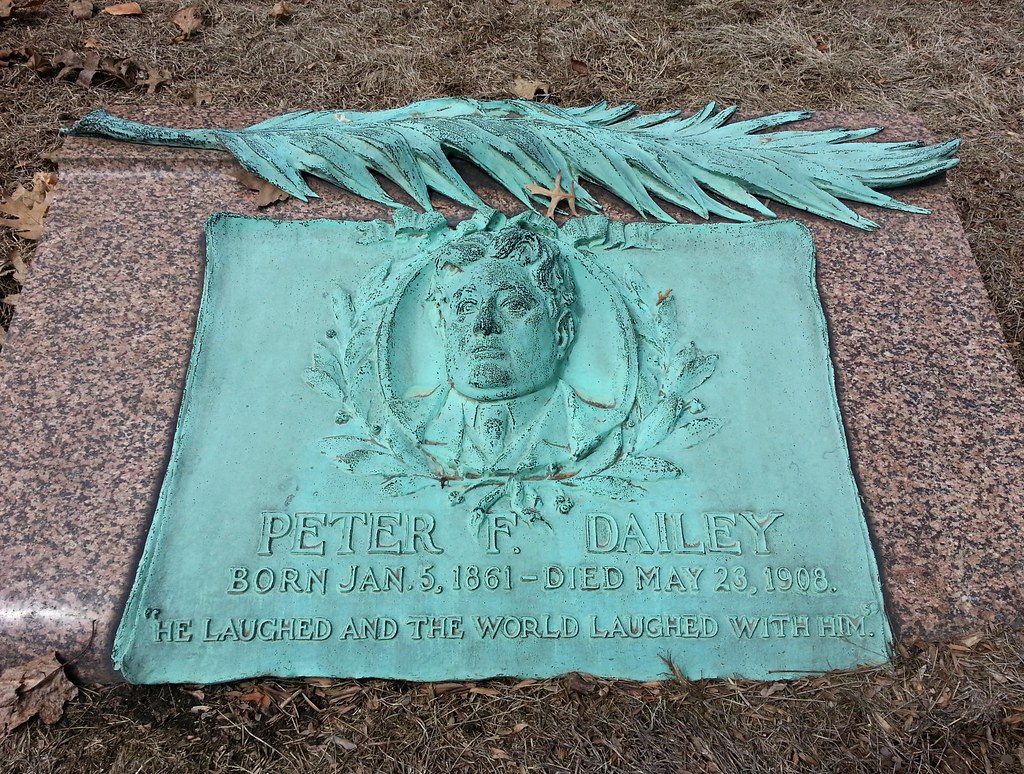
From a 1900 book entitled Famous Stars of Light Opera:
Peter F. Dailey is a great actor in the extremely popular character of Peter F. Dailey, a part that he has played successfully, under various guises and amid diverse environments, for many seasons. It is not a highly complex role at that; it does not sink very deep into the bed-rock of human nature: it would be ridiculous in the extreme to think of it as even pricking the emotions or stirring ever so remotely the sentiments; its appeal to the intelligence, moreover, is entirely superficial, for the reason that its humour is both colloquial and conventional. Yet it is an immensely entertaining personation, for its spontaneity is perfect, its freshness, ease, and good-fellowship most satisfying, and its humanity, in its limited field of up-to-date Broadway, realistic and suggestively true to life. . . .Dailey died in 1908 after contracting pneumonia while starring as the preposterously named Caramel de Jollidog, a "journeyman lover", in a burlesque of The Merry Widow. He is buried in the same family plot as the minstrel Billy West; the two were brothers-in-law, having married a pair of sisters.
Dailey was born with the jester's temperament. Probably his stock of original humour is small, for his wit seems to be imitative rather than creative, and is chiefly remarkable for its nimbleness, timeliness, and adaptability. . . . Dailey's wit has no permanency, and it is often nonsensical and meaningless examined critically and apart from the conditions that gave it birth. It is literally a flash in the pan that catches one unawares, forcing laughter without thought and leaving one as suddenly, in a condition of mental bewilderment as regards the exact cause for the disturbance.
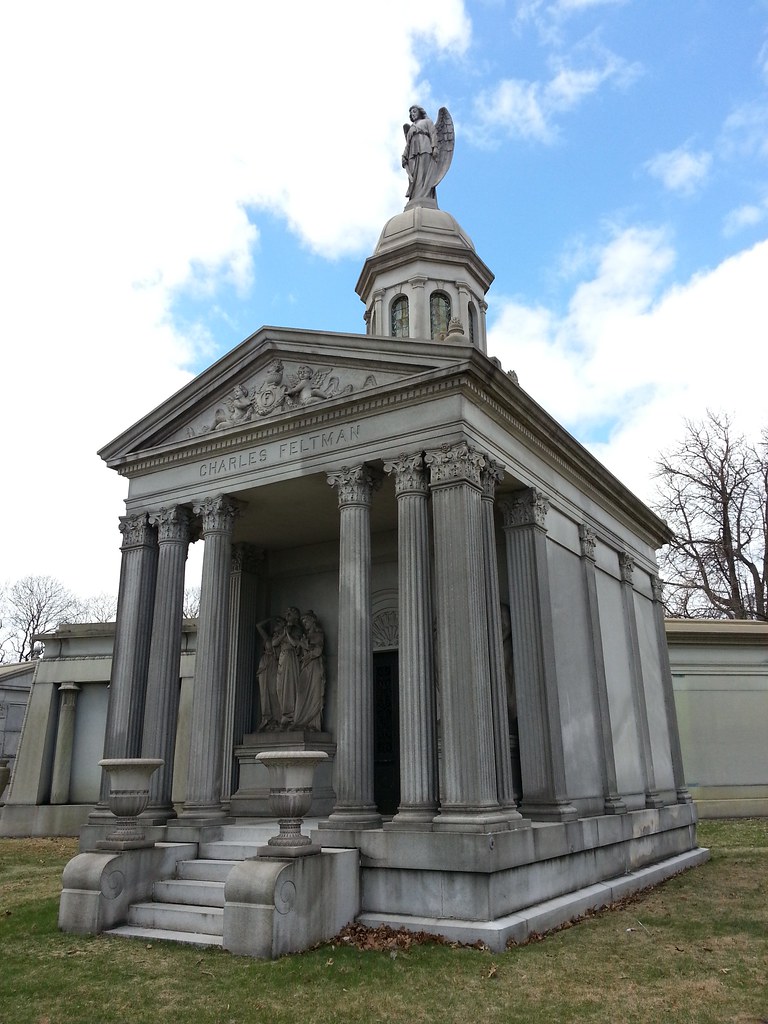
It's a matter of some dispute, but Charles Feltman is often credited with inventing the hot dog. Whether or not the German immigrant was the first person to put a sausage in a bun, he began selling the creations to Coney Island beachgoers sometime around 1870. Finding success as a wiener slinger, he expanded his operations into what eventually became a massive 8,000-seat restaurant complex that was known for its seafood but, of course, still served plenty of hot dogs as well. (The last remaining building from the complex, a kitchen, was torn down a few years ago. Officials from the Coney Island History Project staged a hoax, reported as fact by CNN, in which they "found" a 140-year-old frankfurter preserved in ice beneath the leveled building. They had actually prepared the ice-encased dog elsewhere and snuck it into the demolition site.)
Feltman died in 1910, but his restaurant stayed in business, and it was a few years later that a young Polish immigrant named Nathan Handwerker found work there slicing rolls. Supposedly with some encouragement and borrowed money from his then-unknown co-workers Eddie Cantor and Jimmy Durante, Nathan opened his own hot dog joint in 1916 at the corner of Surf and Stillwell Avenues, where he and his wife served up frankfurters for just a nickel apiece, half the price his former employer charged.
According to legend (and Nathan's grandson), with some variations from one telling to another, people were initially skeptical about the quality and contents of a wiener that could be sold for a mere five cents. To alleviate these concerns, Nathan hired people to dress as doctors and eat hot dogs in front of his stand, giving the impression that medical professionals considered his food perfectly healthy. Before long, with the arrival of the subway in Coney Island (and with the terminal station located right across the street), the dogs started selling like crazy, and now, almost a century later, Nathan's Famous remains a household name.

Charles Minthorn Murphy was the first man to ride a mile on a bicycle in less than a minute. He did it in 1899 by furiously pedaling in the slipstream behind a speeding Long Island Rail Road train (photo) on a section of track where boards had been overlaid on the ties to create a smooth riding surface.
Some excerpts from Murphy's own account of the event:
Within five seconds the rate of speed was terrific; I was riding in a maelstrom of swirling dust, hot cinders, paper and other particles of matter. The whipsaw feeling through a veritable storm of fire became harder every second . . .Read the rest here.
I could feel myself getting weaker every second.
I was closely following into the maelstrom of dust, which whirled, eddied and rushed in a shrieking, roaring turmoil and pandemonium about me. The suspense became maddening. All kinds of unpleasant things passed through my mind. I saw ridicule, contempt, disgrace and a lifetime dream gone up in smoke.
As I looked up I saw the agonized faces, yelling, holding out stretched hands as if they would like to get hold of or assist me somehow.
They sent the thrill of determination through me. . . .
Then I pedalled through the fire of hot cinders and rubber, but with each sting it made me more determined. . . .

From the NY Times, August 27, 1988:
In a city that exalts successful artists in the fashion of rock stars, Jean Michel Basquiat seemed blessed. When he burst onto the art scene in 1981, his paintings of anguished figures were hailed by some critics as works of genius. Admirers besieged him at Manhattan's hottest night clubs. Sales of his art grossed millions of dollars.(His next-door neighbor had some family visiting today.)
Mr. Basquiat was 27 years old when he was found dead in his apartment in the East Village on Aug. 12 from what friends say was an overdose of heroin.
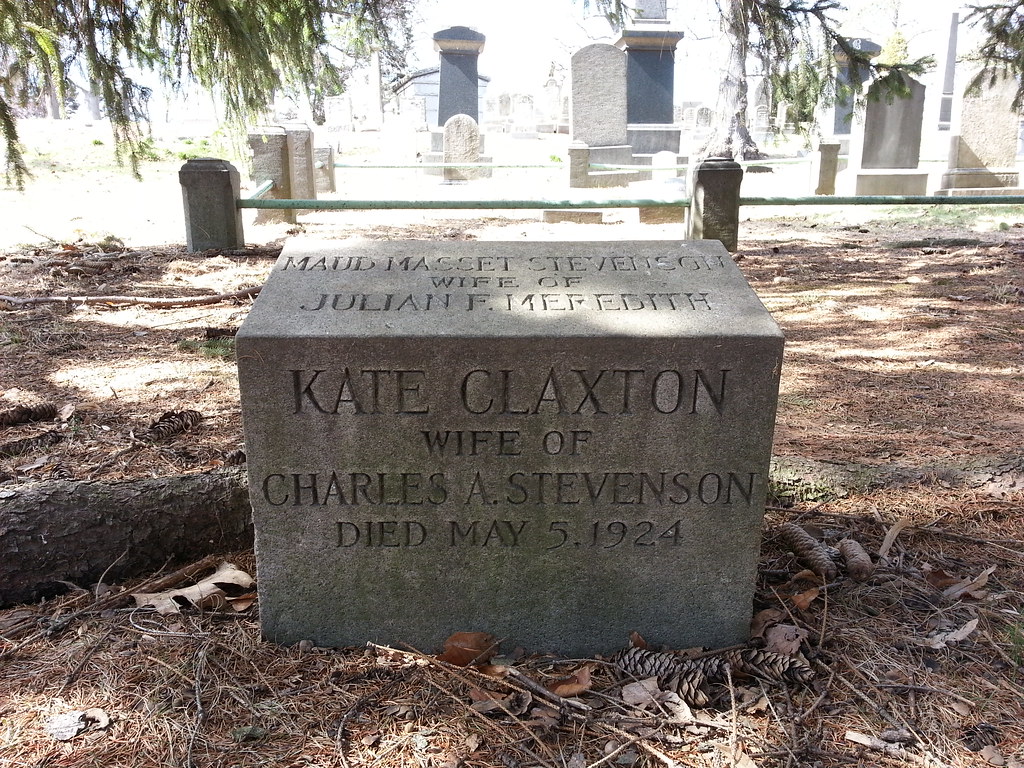
A popular actress, Ms. Claxton was on stage during the 1876 Brooklyn Theatre fire that killed at least 278 people (a disaster that has its own memorial here at Green-Wood). After a deadly fire broke out in a St. Louis hotel where she was staying a few months later, the press started suggesting it was bad luck to have her in a building, with some publications even printing jokes and making up phony stories about her. This treatment of Ms. Claxton was sufficiently widespread that Thomas Nast was inspired to draw a cartoon in Harper's Weekly mocking the dishonorable journalists who had been writing such things.

John Stemme was inspired during his travels in Egypt to build this towering monument at his cemetery plot. Standing some 65 feet in height, it was said at the time of its erection in 1896 to be the tallest grave marker in the country. The monolithic granite shaft alone is about 54 feet long; it was carried to New York atop three custom-built rail cars from Barre, Vermont. Weighing around 150,000 pounds before being cut, it was reportedly the largest single piece of granite ever quarried in the US. Neither of those superlative claims holds up to the facts, however: in 1880, an even taller and heavier granite obelisk (photo) was unveiled at the grave of General John E. Wool at a cemetery in Troy, New York.
Some hieroglyphs can be found carved into the pedestal at the base of the monument. They are apparently a representation of Mr. Stemme's name: "it is said that the millionaire spent many weary weeks hunting for a brainy man who was bold enough to undertake the task of translating the name John Stemme into Egyptian."
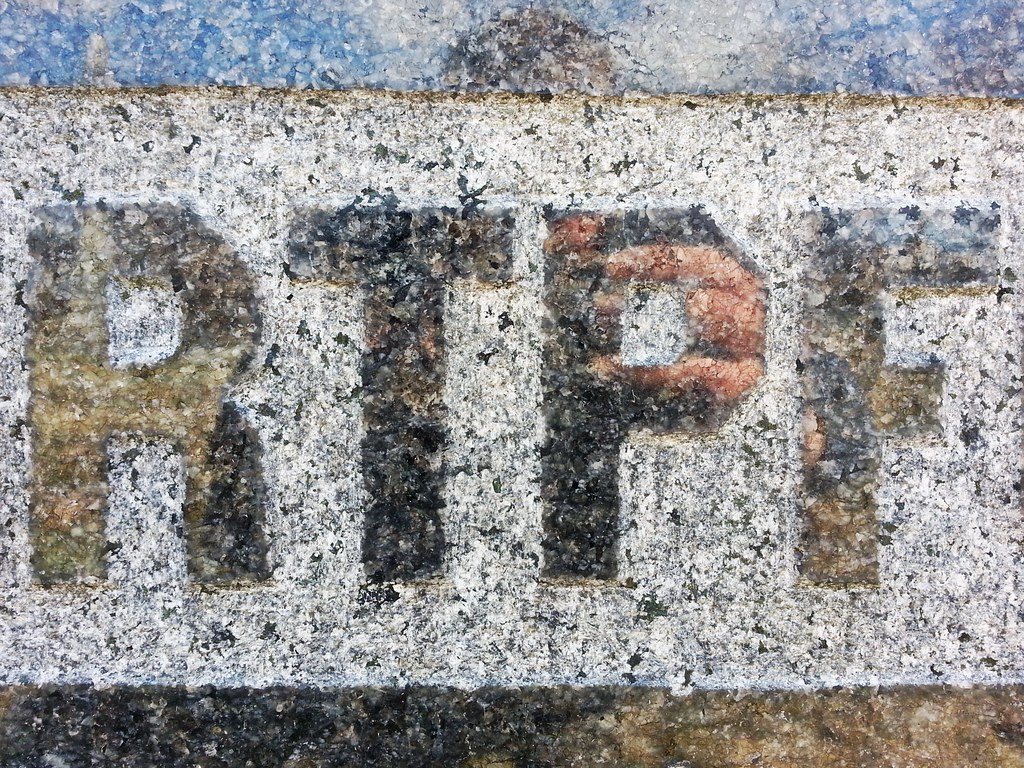
Can you guess the surname this string of consonants belongs to? Here's the answer.

Isaac K. Funk was the founder of Funk & Wagnalls. We passed by his old house on Staten Island last year.
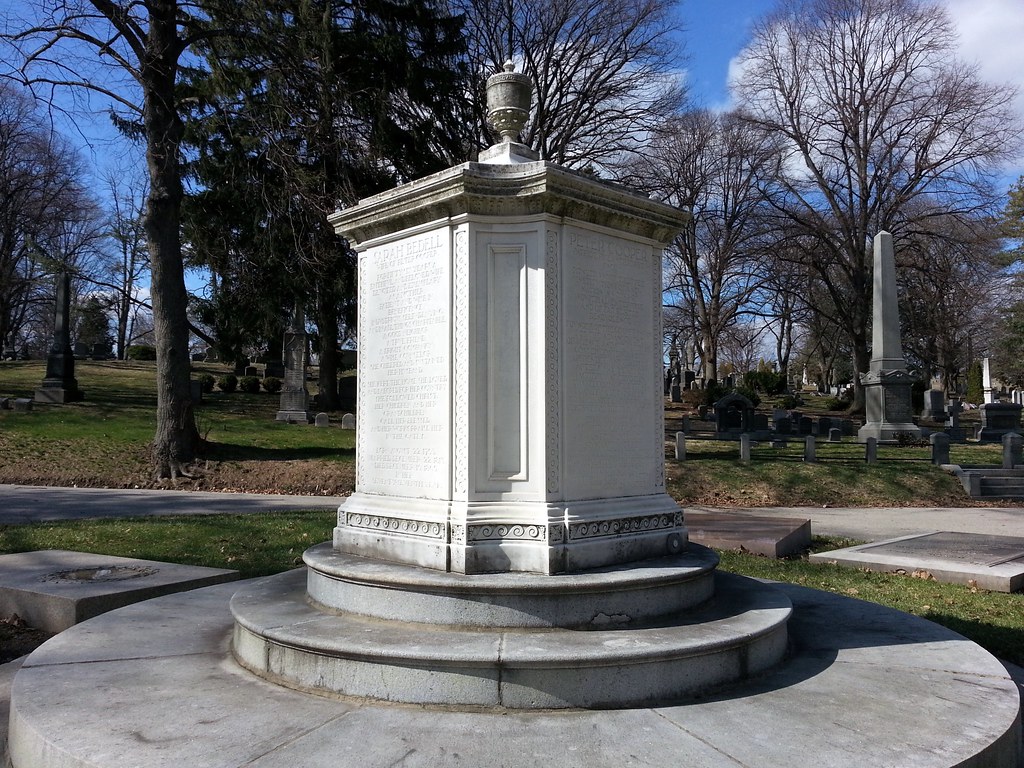
Borrowing from a previous post:
The founder of Cooper Union, Peter Cooper was an extremely successful inventor (his creations ranged from America's first steam locomotive to an early version of Jell-O) and entrepreneur (we saw the site of one of his glue factories covered in snow back in 2012), a beloved philanthropist, and the cultivator of one of history's great beards.
You can read the text carved into the monument here.
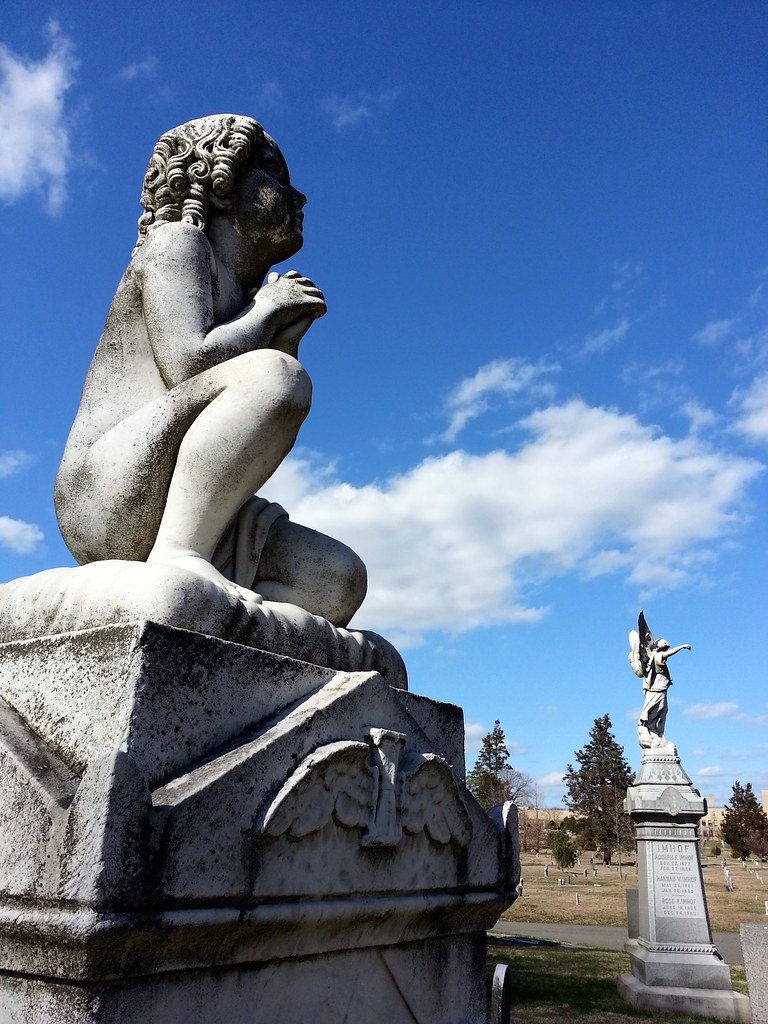
Inscribed on the monument is the final stanza of this hymn by Isaac Watts:
There are no acts of pardon past
In the cold grave to which we haste
But darkness, death and long despair
Reign in eternal silence there
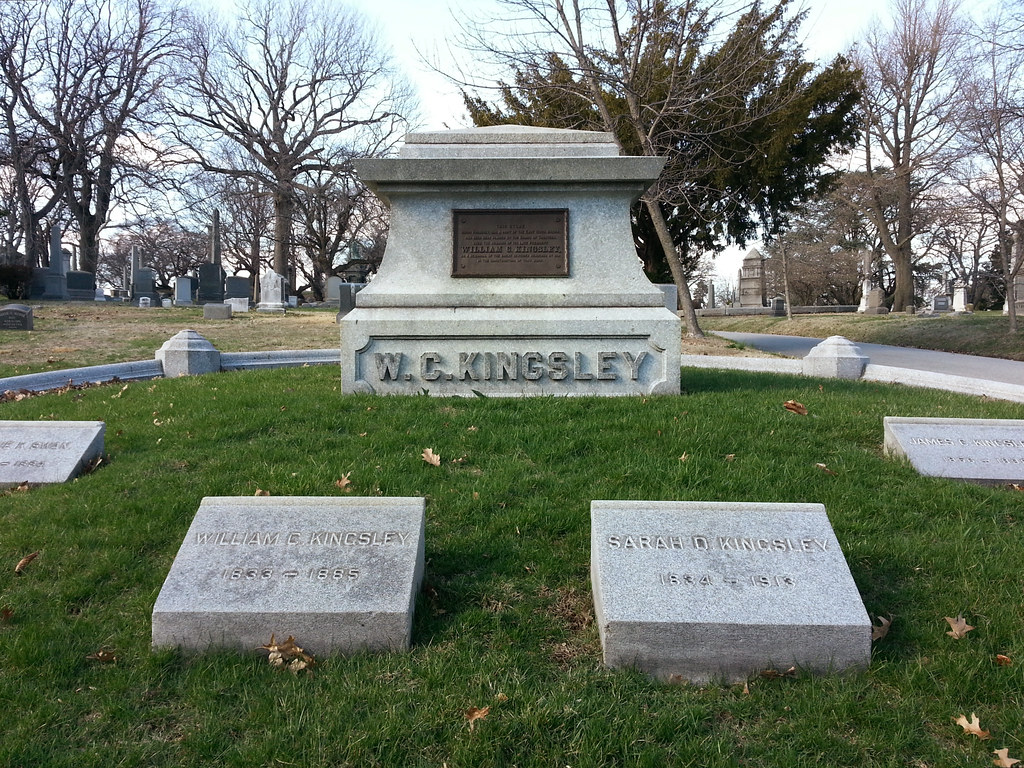
The plaque on the monument at center reads:
THIS STONE
WHICH FORMERLY, WAS A PART OF THE EAST RIVER BRIDGE [a.k.a. the Brooklyn Bridge],
HAS BEEN HERE PLACED BY THE BOARD OF TRUSTEES,
OVER THE REMAINS OF ITS LATE PRESIDENT
WILLIAM C. KINGSLEY,
AS A MEMORIAL OF THE GREAT SERVICES RENDERED BY HIM
IN THE CONSTRUCTION OF THAT WORK.

Located right behind the sewing machine pioneer's imposing monument is a headstone for Fannie — the family dog! It reads:
ONLY A DOG DO YOU SAY, SIR CRITIC?
ONLY A DOG, BUT AS TRUTH I PRIZE,
THE TRUEST LOVE I HAVE WON IN LIVING
LAY IN THE DEEPS OF HER LIMPID EYES.
FROSTS OF WINTER NOR HEAT OF SUMMER
COULD MAKE HER FAIL IF MY FOOTSTEPS LED:
AND MEMORY HOLDS IN ITS TREASURE CASKET
THE NAME OF MY DARLING WHO LIETH DEAD.

Green-Wood's chapel is a scaled-down version of Christopher Wren's Tom Tower. Here's a shot I took last fall from the hill in the background.
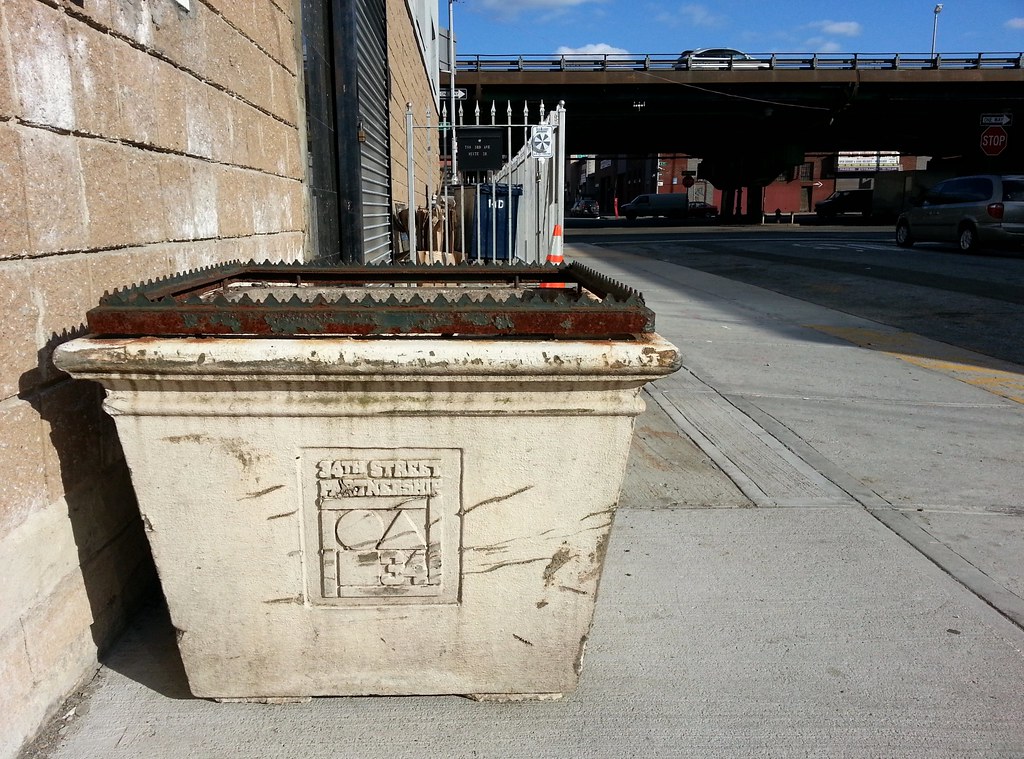
Here in Sunset Park we find another 34th Street Partnership planter living far from its native land.





